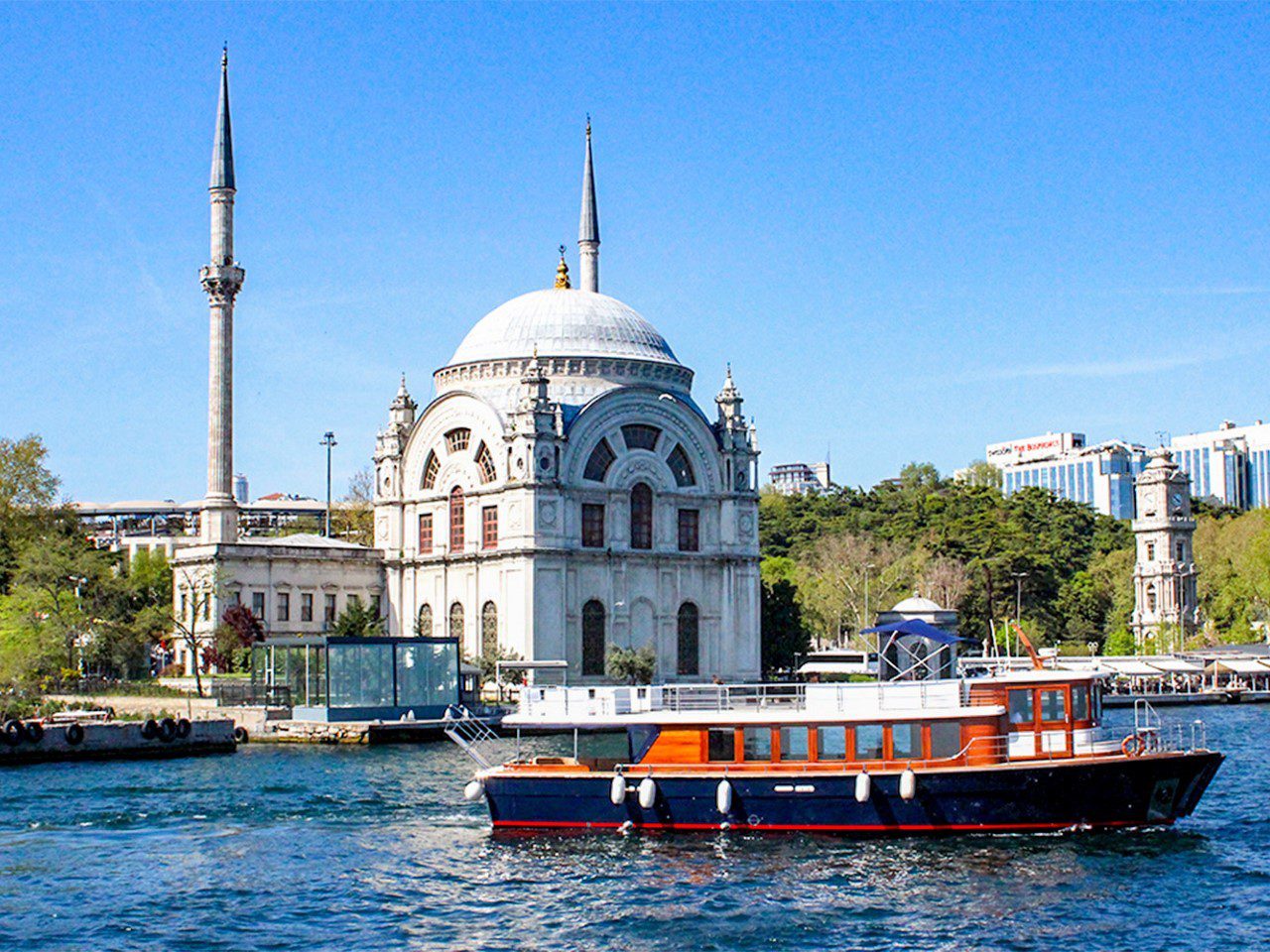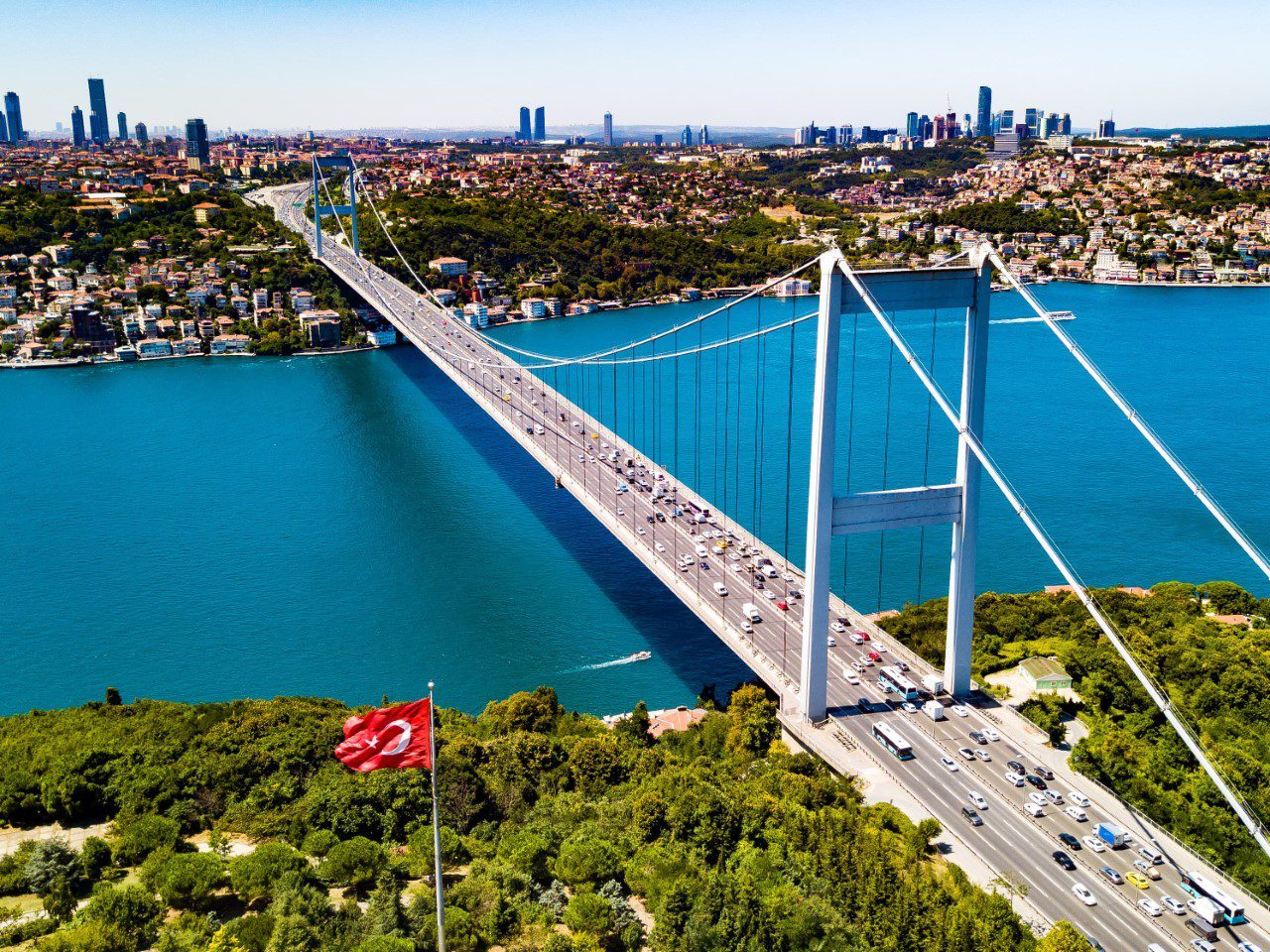We are exploring the Enchanting Bosphorus. Nestled between Europe and Asia, the Bosphorus Strait stands as a majestic gateway connecting the Black Sea to the Sea of Marmara. This natural wonder, rich in history and cultural significance, holds a mesmerizing allure that has captivated travelers and historians for centuries. Let us embark on a journey to discover the enchanting Bosphorus and unravel the tapestry of its legacy.

Geography and Geopolitical Significance
Stretching approximately 31 kilometers (19 miles), the Bosphorus Strait weaves through Istanbul, Turkey, dividing the city into its European and Asian sides. It’s more than just a body of water; it’s a lifeline of trade and transportation. Ships of all sizes and origins navigate its waters, laden with goods that traverse continents. Its strategic location has led to the rise of Istanbul as a cosmopolitan hub, where the East meets the West in a dynamic blend of cultures.
Historical Odyssey
The Bosphorus carries a weight of history that spans millennia. It’s a testament to the various civilizations that have left their indelible marks along its shores. From the ancient Greeks and Romans to the Byzantines and Ottomans, each era has contributed to the mosaic of stories that the Bosphorus whispers to those who listen. The Byzantine Empire, in particular, recognized the importance of the Bosporus, constructing awe-inspiring landmarks like Hagia Sophia and the Byzantine Walls to protect the city from potential invaders. With the Ottoman Empire’s rise, Istanbul (then Constantinople) continued to flourish as a melting pot of cultures, and the Bosphorus remained a vital conduit for trade and diplomacy.

Architectural Marvels
The Bosphorus is not just a body of water; it’s a living gallery of architectural wonders that span centuries. Majestic palaces, Ottoman-era mansions, and iconic bridges pepper its shores. The Dolmabahçe Palace, an opulent symbol of Ottoman grandeur, is a testament to the empire’s affinity for architectural beauty. The Bosphorus Bridge, a modern marvel that connects Europe and Asia, is a testament to engineering prowess and the unity of diverse worlds.
Cultural Fusion
The Bosphorus is a melting pot of cultures that converge and coexist, blending traditions and beliefs in a unique harmony. This mingling of civilizations is reflected in the culinary scene, where the aromas of Turkish delights waft through bustling markets, enticing locals and visitors alike. The shores also come alive with festivals celebrating art, music, and the region’s rich heritage.

Natural Splendor
Beyond its historical and cultural significance, the Bosporus boasts natural beauty that is as captivating as it is diverse. Rolling hills, verdant forests, and shimmering waters merge to form an awe-inspiring landscape. The strait is also a haven for marine life, boasting many species that add to its ecological significance.

Exploring the Enchanting Bosphorus Conclusion:
The Bosphorus is more than a body of water; it’s a living chronicle of human history, a testament to the ingenuity of civilizations that have thrived along its shores. It’s a bridge between cultures, a trade lifeline, and a treasure trove of tales waiting to be discovered. As we navigate its waters or stroll along its banks, we’re reminded that the Bosphorus is not just a strait; it’s a vessel of time, carrying the legacy of the past into the currents of the present and beyond.
Exploring the Enchanting Bosphorus FAQs:
What is the Bosphorus Strait?
The Bosphorus Strait is a narrow waterway that connects the Black Sea to the Sea of Marmara, serving as the natural boundary between Europe and Asia. It runs through Istanbul, Turkey, and has immense historical, cultural, and geopolitical significance.
What is the history behind the Bosphorus?
The Bosphorus has a rich history dating back to ancient times. It has witnessed the rise and fall of various civilizations, including the Greeks, Romans, Byzantines, and Ottomans. The strait's strategic importance led to the establishing of prominent landmarks and architectural marvels that have left an enduring legacy.
What role does the Bosphorus play in trade and transportation?
The Bosphorus is a crucial maritime trade route between the Black Sea and the Mediterranean. It facilitates the movement of various sizes of goods, commodities, and ships, contributing to Istanbul's status as a vital center of commerce and a melting pot of cultures.
What are some notable landmarks along the Bosphorus?
The Bosphorus is adorned with iconic landmarks, including the Dolmabahçe Palace, a stunning Ottoman palace known for its opulence and grandeur. The Bosphorus Bridge, officially named the 15 July Martyrs Bridge, is a modern suspension bridge connecting Europe and Asia. Additionally, historic waterfront mansions and fortifications line the strait's shores, reflecting its diverse history.
How does the Bosporus impact Istanbul's identity?
The Bosphorus is more than a geographical feature; it is integral to Istanbul's identity. It divides the city into European and Asian sides, shaping its unique character. The strait's cultural fusion, historical significance, and natural beauty contribute to Istanbul's allure as a captivating destination that bridges the gap between continents and eras.
| ||||||||||||||||||||||||||||||||||||||||||||||||||||||||||||||||||||||||||||||||
| Powered by Viator. |






0 Comment